Nvidia, AMD, and Intel all unveiled some of the best PC hardware of CES 2024. With plenty of processors for both mobile and desktop, as well as some new graphics cards, the three PC giants came in with plenty to offer — but which one did it best?
We have an interesting lineup from Intel, which expanded its list of top CPUs with chips ranging from the entry-level Core i3 to the high-end Core i9-HX. AMD served up some revolutionary APUs and a new graphics card. Meanwhile, Nvidia did something unprecedented — it actually offered better value in its new GPUs. Let’s compare the three and determine who won this year’s CES 2024.
Nvidia: Super cards and lots of AI
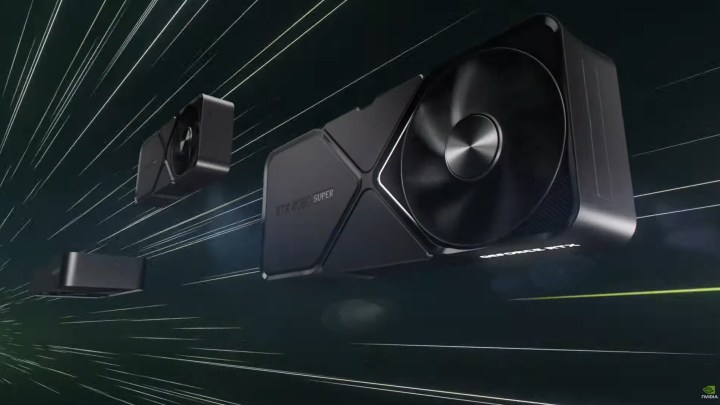
By the time CES 2024 came around, Nvidia’s most anticipated announcement was spoiled five times over. I’m talking about the RTX 40-series Super refresh, a trio of graphics cards that was leaked roughly every few weeks for the past few months. However, even though we knew all the specs beforehand, Nvidia still managed to deliver a surprise.
It’s not that the three additions to Nvidia’s list of top graphics cards were any different than we thought. It’s the fact that Nvidia strayed from its previous pricing strategy and actually offered more value instead of just more performance.
When Nvidia unveiled the RTX 4080 Super, the RTX 4070 Ti Super, and the RTX 4070 Super, it also released the prices for these three cards, and therein lies the shocker. While the RTX 4080S only offers about 2 to 5 percent better performance than the RTX 4080, it’s coming out at $1,000, meaning $200 less. That took me entirely by surprise, and this drop in price makes the RTX 4080 Super a great high-end GPU without an overly inflated price tag.
The RTX 4070 Ti Super and the RTX 4070 Super both retain the price of the original models, but each brings performance improvements, with the 4070 Ti Super featuring a much-needed boost in memory — from 12GB to 16GB — while the 4070 Super is up to 15% faster than its predecessor. The top two cards will replace their previous versions, but the RTX 4070 Super will coexist alongside the RTX 4070.
The next-gen RTX 50-series wasn’t mentioned at all, so Blackwell remains a mystery for the time being.
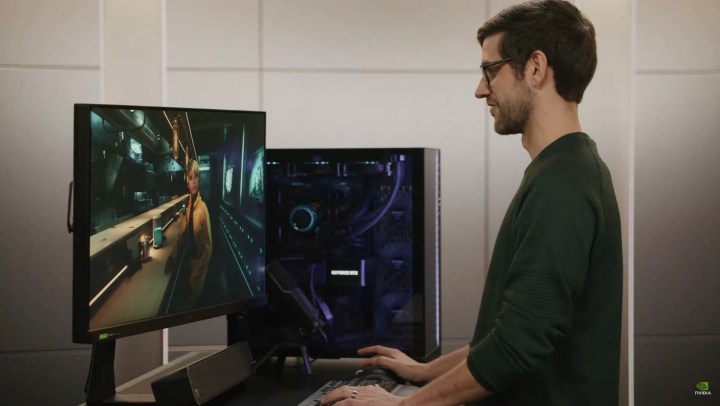
Seeing as every tech company ever created now dabbles in AI, it’s no wonder that Nvidia’s focus is on it, too. It showed a demo of Nvidia’s Ace, an AI tech that lets gamers speak to NPCs and receive custom responses. Ace allows developers to simply upload a character’s backstory and have the language model turn that into custom-generated responses. The demo broke the fourth wall in every way possible, but the tech is certainly impressive.
Nvidia also introduced Half-Life 2 RTX, which brings Nvidia’s RTX treatment to the old classic. Community modders are helping Nvidia bring this project to life, refreshing it with ray tracing and all-new assets. It’s something very close to Nvidia’s Portal RTX. In addition, RTX Remix, a tool that can be used to remaster games with ray tracing, is now set to launch a beta release on January 22.
As far as AI goes, Nvidia talked about how its products will power all sorts of new developments in artificial intelligence, including generative AI, such as chatbots and image generators. Of course, Nvidia Ace is also a big part of that.
AMD: The return of the APUs
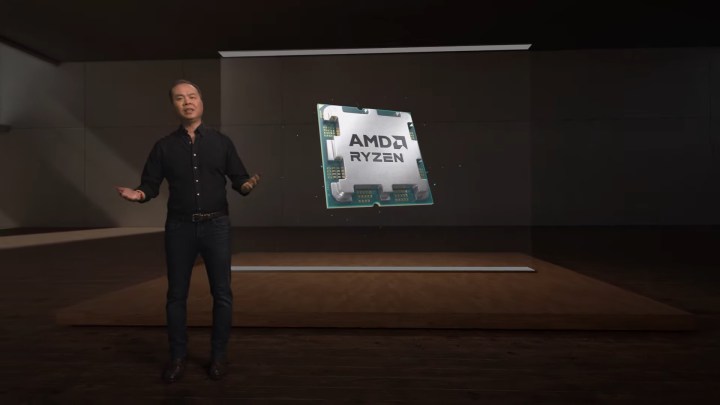
AMD dipped its toes into GPU territory in its CES 2024 keynote, but the vast majority of it was centered around processors. It also touched on AI, but then, most companies at this year’s CES are all about AI.
Team Red started by talking about something it had already announced back in December 2023 at its Advancing AI — the Ryzen 8040 processors, which sound like they’re next-gen, but they’re actually not. Similarly, although AMD’s big reveal during CES 2024 is the Ryzen 8000G APUs, those too are still powered by Zen 4 cores. Strangely, this does make some sense — after all, AMD went from Ryzen 5000 to Ryzen 7000, so the real next generation will probably be referred to as Ryzen 9000.
After it was done rehashing the capabilities of the Ryzen 8040 CPUs, which we now know will hit the shelves in laptops made by AMD’s partners this February, AMD moved on to talking about the Ryzen 8000G, a new series of APUs that combine a Zen 4 processor, a neural processing unit (NPU), and integrated graphics that can rival some discrete GPUs. In fact, the Ryzen 8000G graphics are so good that you’ll be able to play Cyberpunk 2077 on these APUs, says AMD.
In total, AMD is bringing out four new Ryzen 8000G chips, but it’s also reviving its Zen 3 lineup yet again with the new Ryzen 7 5700X3D, priced at $250, as well as the Ryzen 7 5700, Ryzen 5 5600GT, and the Ryzen 5 5500GT. While all of those belong to what seems like a dead platform, it’s still pretty nice of AMD to offer new upgrade paths to users who aren’t quite ready to build a whole new PC.

Next, AMD unveiled its new graphics card, the RX 7600 XT. The GPU marks an interesting addition to the lineup, boosting the VRAM from 8GB to 16GB. Unfortunately, that memory is spread across the same tiny 128-bit memory bus, so the card’s performance could be a little hit-and-miss. However, AMD is undercutting Nvidia’s latest releases by a lot here by pricing this GPU at $330. Those needing a budget graphics card may very well turn to AMD.
AMD’s AI announcements are perhaps less thrilling to gamers but are helpful to developers. Ryzen AI, now enabled across AMD’s product stack, grants access to thousands of various AI models for devs to use, while AMD ROCm is now available on RX 7900 GPUs, allowing devs to use PyTorch for machine learning and language model training.
Intel: CPUs, CPUs everywhere

Intel Arc? What Intel Arc?
If you thought Intel would have some news to share about Intel Arc Battlemage graphics cards during CES 2024, you weren’t the only one. However, Intel focused entirely on processors this time around, and boy did it release a whole lot of them. (Although, according to a PCWorld interview, Arc GPUs are alive and coming in 2024.)
Intel is serving up both desktops and mobile processors across three different lineups, and surprisingly, most of it is Raptor Lake refresh stuff as opposed to Meteor Lake. Laptop users have a lot to look forward to, with five new chips in the Intel Core HX series. Starting with the midrange Core i5-14450HX, the lineup goes all the way up to the impressive Core i9-14900HX, equipped with 24 cores and 32 threads. Intel expects to see a decent improvement in performance, including up to 17% boost in gaming and up to 51% faster performance in productivity tasks with these chips.
If you’re into ultrathin laptops, you might like the new Core U Series 1 processors, consisting of just three CPUs for now. The chips aren’t power-hungry at all, consuming a measly 15W of power (that can be boosted up to 55 watts), but they deliver up to 10 cores and 12 threads as well as a maximum P-core frequency of 5.4GHz.
Those of us who prefer socketed CPUs and desktop PCs are getting 18 new chips from the Raptor Lake range, including processors that will offer up to 5.8GHz frequencies, with chips like the Core i9-14900 and the Core i7-14700 leading the lineup. All in all, Intel is releasing over 25 new processors made for various use cases, and some of those will undoubtedly make it onto our list of best CPUs.
Unsurprisingly, Intel is toying with AI, too, and I’m not strictly talking about its Meteor Lake chips with integrated NPUs. Instead, Intel is entering the automotive market with new chips made especially for software-defined vehicles (SDVs). Intel’s plans include bringing generative AI and driver and passenger monitoring.
Who did it better this year?
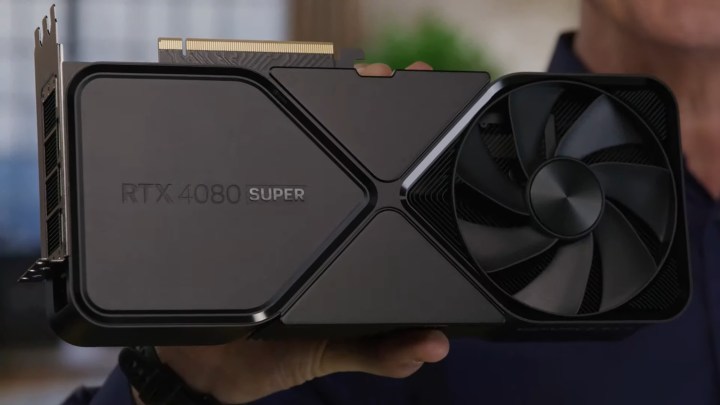
Between AMD, Intel, and Nvidia, we’ve seen some really interesting announcements at CES 2024. Although the general focus was heavily on AI, the new additions to PC hardware (also in relation to AI) are pretty exciting.
I’d put Intel in third place this year. Although the company unveiled a massive number of processors, it feels like it’s in a sort of transitory period between one generation and the next, and the next. Sure, there are lots of new chips, but the vast majority of them belong to the Raptor Lake Refresh. Intel’s Core Ultra CPUs introduce Intel to a whole new market, boosting graphics performance and unlocking new AI capabilities in thin laptops — but they’re not quite enough to warrant being called “groundbreaking.”
Comparing AMD to Nvidia never comes easy, and the two respective CES 2024 performances are no different. Nvidia managed to shock not just me, but also many others by releasing three GPUs that seem like they’ll be good value.
I was fully prepared to see Nvidia price the RTX 4080 at $1,200 to $1,300, but it didn’t. The other two cards retained their prices, but they also offered tangible performance improvements. Perhaps we all have quite low standards when it comes to Nvidia right now, but it does feel like an important step in the right direction. Feel free to call me out for my optimism when the RTX 50 series inevitably comes out with terrifyingly high prices.
For AMD, I’m not quite ready to call its new GPU impressive, but it makes a good alternative to the RX 7600. It offers a lot more VRAM than similarly-priced Nvidia offerings, but it might run into the same problems as the 16GB version of the RTX 4060 Ti, with way too much memory across such a narrow bus. On the upside, it’s pretty cheap, and will likely become a favorite among budget-conscious gamers in due time.
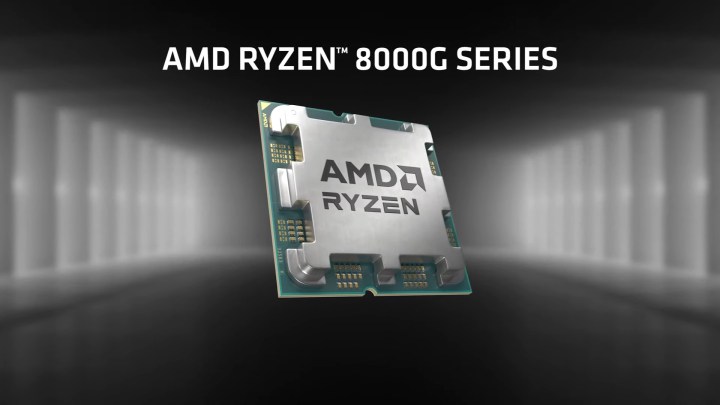
AMD’s APUs are far more hype-worthy than its latest venture into the GPU market. If they’re as good as AMD claims, they might make entry-level gaming significantly cheaper while offering upgradeability for those who might want to add a discrete GPU later on down the road.
Both AMD and Nvidia could have done better. I would have loved to hear more about RDNA 4 GPUs, which are said to be coming out this year, and also Blackwell cards, slated for a 2024 to 2025 release.
To me, at this year’s CES, both giants were evenly matched and brought some noteworthy products to the table. Nvidia certainly won the GPU game with its unexpected change of strategy, but AMD deserves a close runner-up spot for what seems to be a well-rounded portfolio of new hardware.
Editors’ Recommendations

